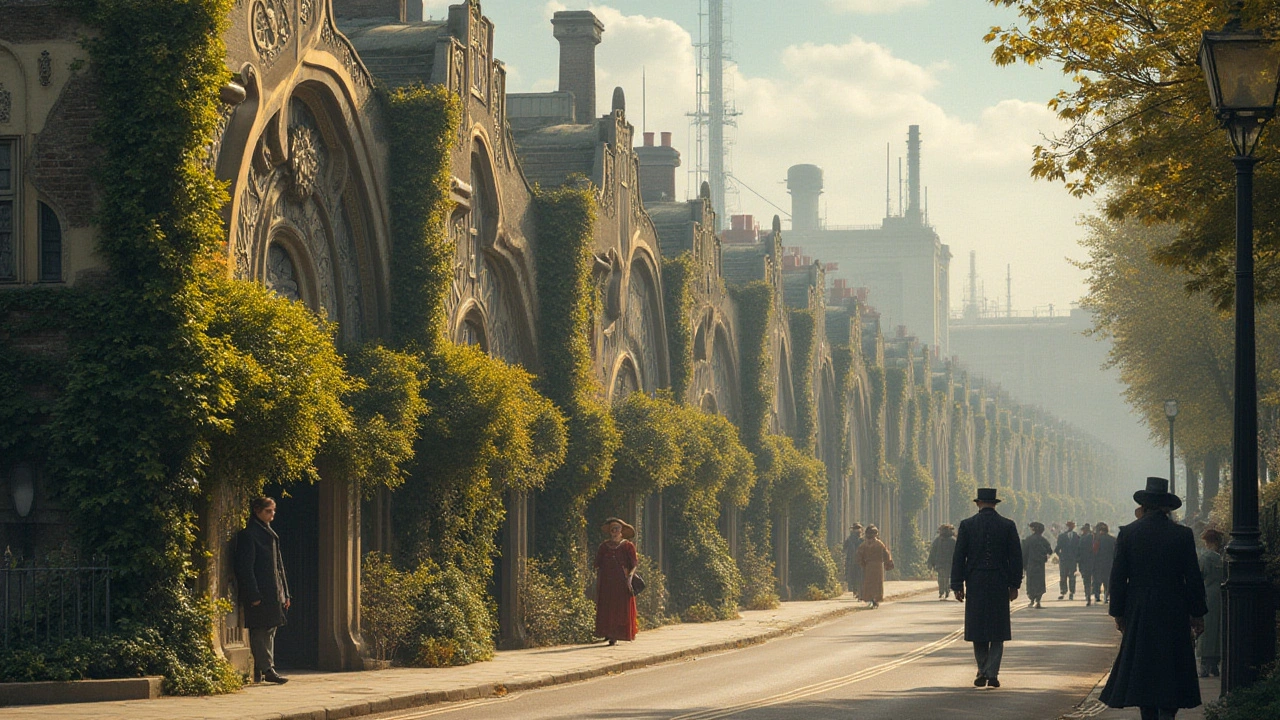Art Nouveau architecture goes beyond mere decorative embellishment, embodying a revolutionary movement that transformed both aesthetic principles and architectural practices in the late 19th and early 20th centuries. This captivating style emerged as a response to industrialization, emphasizing organic shapes and detailed ornamentation. Each building is a celebration of craftsmanship, with unique elements and materials that merge functionality with artistic flair. This article delves into the history, key features, notable structures, and enduring impact of Art Nouveau, offering a deeper understanding of this iconic design movement.
Art Nouveau: What it looks like and why it still matters
Art Nouveau blew up around 1890–1910 as a reaction to mass production. It tried to make everything look handmade again — from door handles to whole facades. If you want to spot it fast, look for flowing lines, plant-like motifs, and integrated decoration. This guide shows the simplest clues, real examples, and how to use the style without turning your home into a museum.
How to spot Art Nouveau
Start with the lines. Art Nouveau favors long, sinuous curves often called "whiplash" lines. These curves appear in ironwork, stained glass, and balcony railings. Next, check the motifs: stylized flowers, vine tendrils, insects, female figures and organic shapes. Materials are mixed — carved wood, wrought iron, glass mosaics and colored tiles are common. Facades often flow as a single composition: windows, balconies and ornament are designed together, not added later. Finally, look for craftsmanship: seams are hidden, joints are curved, and decoration feels custom-made.
Famous places and people to remember
Want quick name-drops to help you recognize the style? In Brussels, Victor Horta’s Hôtel Tassel is classic Art Nouveau with its iron staircases and floral motifs. In Barcelona, Antoni Gaudí pushed the style into wild, organic forms — Casa Batlló shows how far curves can go. In Glasgow, Charles Rennie Mackintosh mixed simple geometry with floral detail, which helps you see the style’s quieter side. Knowing one example from each region makes it easier to spot regional twists — Paris favors elegant enamel and glass, while Central Europe often shows denser surface decoration.
How does Art Nouveau differ from nearby styles? Compared with Beaux-Arts, Art Nouveau rejects strict symmetry and classical orders. Compared with Art Deco, it prefers natural curves over sharp geometry. Those differences help you categorize what you see.
Want to use Art Nouveau in a modern home? Start small. Choose one or two elements: a stained-glass window, a curved mirror, an iron railing or an artful light fixture. Pick warm materials — oak, brass, handmade tiles — and keep the rest of the room simple so the details pop. For furniture, choose pieces with gentle curves rather than heavy carving. Avoid floral overload: one strong motif is better than many competing patterns.
Restoration and buying tips: check for original materials before restoring. Old ironwork often needs rust treatment and a protective finish; stained glass benefits from new lead came and UV-safe glazing. When buying reproductions, ask where it was made and what materials were used — cheap cast pieces lose the handmade feel. If you’re unsure, bring photos to a conservator or a specialist in period interiors.
Art Nouveau still matters because it connects design to nature and craft. Use it to add warmth, flow, and personality to a space without copying an entire era. A single curved lamp or a mosaic panel can give a modern room an instant, human touch.
Art Nouveau architecture, emerging at the turn of the 20th century, is marked by its ornamental style that draws inspiration from natural forms and structures. The movement sought to break away from the historical architectural styles and aimed to infuse functionality with beauty. Characterized by its flowing lines and intricate details, Art Nouveau was seen in buildings worldwide, with notable examples in Europe and beyond. The style not only captured the aesthetic spirit of its time but also paved the way for future design innovations.


